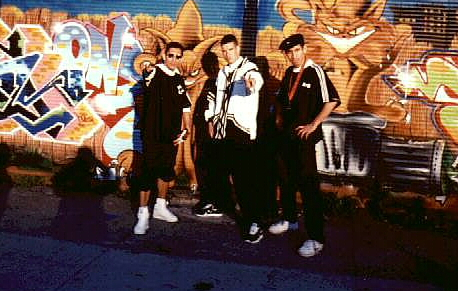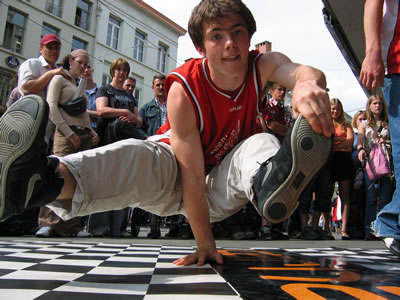A Counter-Cultural Dance
The unique relationship of breakdancing with mainstream culture deserves a special mention here. Like graffiti, breakdancing emerged at odds with mainstream culture, appropriating certain aspects of the mainstream to its own ends. Much like the graffiti-artist's appropriation of New York subways as a canvas or the turnablist's appropriation of the record player as a music producer, the b-boys' unsanctioned use of public space (streets) for dancing can also be seen as a form of appropriation. The emphasis on sharp breaks in the music as opposed to a smooth, regular tempo can also be understood as expressions of resistance in a culture that values order and regularity.

Break Easy of Breaking In Style (79) Representing Brooklyn B-boy Style7
Breakdancing in the Mainstream
By the early 1980's, breakdancing was being practiced widely at parties and in discos. It became very popular in the U.S., Europe, and Japan. Breakdancing helped to bring hip-hop into mainstream acceptance - it appealed to youth across race, class and gender boundaries. Some of the earliest stars in breakdancing include the twins Kevin and Keith Smith, and "Crazy Legs" Richie Colon, who doubled for actress Jennifer Beals during her breakdancing scenes in the movie Flashdance.

A street performer in Europe8